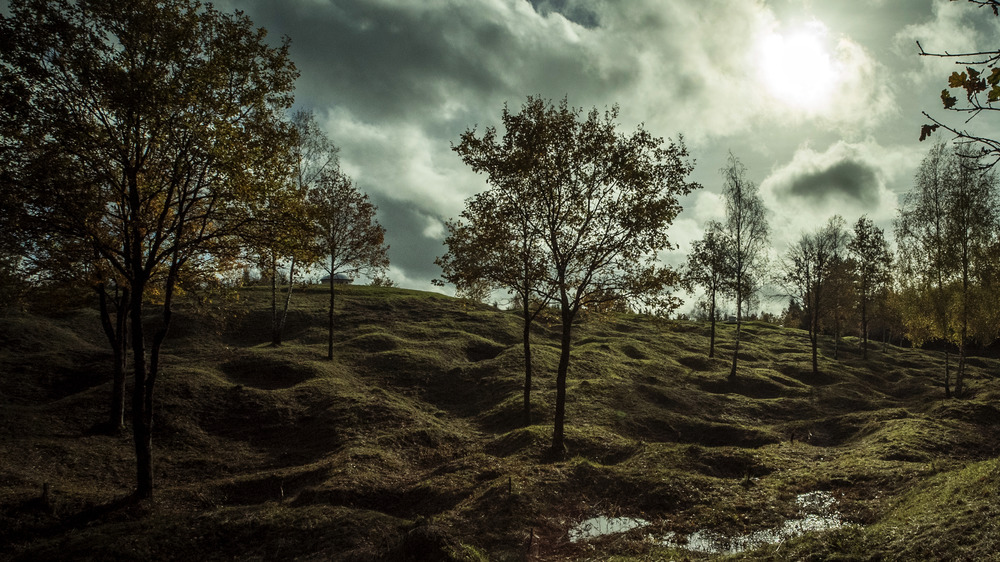Why The French City Of Verdun Is Littered With Explosives
After the intense fighting of World War I and World War II, many areas along the borders of Belgium, France, and Germany, including the small French city of Verdun, were left littered with explosives. A 2018 Reuters feature on the 100-year anniversary of the end of WWI highlighted the now abandoned town of Verdun, located in northeastern France, and why it is still home to hundreds of undetonated bombs and other munitions.
"The Great War" — World War I, 1914-1918 — claimed the lives of more than 10 million soldiers, and the Mémorial de Verdun tells us that the Battle of Verdun was its longest period of conflict, lasting from February 21 to December 18, 1916. The months of constant fighting and shelling between French and German forces resulted in about 400,000 wounded soldiers and 305,000 deaths, with losses split almost evenly between the opposing armies. The battle also changed the landscape dramatically. National Geographic notes that the 42,000-acre area surrounding Verdun, once productive farmland, is still scarred by the remains of trenches and explosions. British historian Christina Holstein told the magazine that the Battle of Verdun was the first of World War I's great artillery battles, with millions of artillery shells fired during the fighting. The abandoned area is now known as the "Zone Rouge" (Red Zone).
How long will there be explosives in Verdun?
According to National Geographic, the unexploded bombs and live artillery shells that still litter the French city of Verdun and the surrounding area remain dangerous, more than a century later. To deal with the threats properly, the French government deploys a special munitions-clearing agency, the Department du Deminage, to remove these explosive remnants of World Wars I and II from Verdun and other parts of the country. Tragically, it's often local residents who find, and are sometimes hurt or killed by, the still-active explosives before this agency discovers them.
Verdun may never be completely cleared of the explosives that litter the area. Reuters notes how the Metz Demining Centre collects between 45 and 50 tonnes of old explosive devices from the two World Wars from the area every year, and it's estimated that there are at least 250-300 tonnes that have yet to be uncovered.
There was one day when the searching of the River Meuse's riverbed resulted in finding dozens of unexploded shells that weighed more than 5 tonnes. Experts believe it could take hundreds of years to clear out all the dangerous debris and make the area safe to be lived in again.

